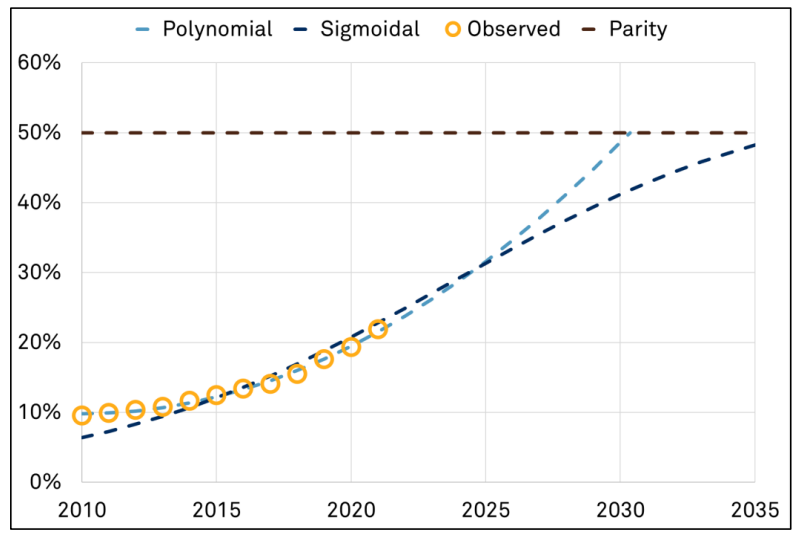S&P Global Offerings
Featured Topics
Featured Products
Events
S&P Global Offerings
Featured Topics
Featured Products
Events
S&P Global Offerings
Featured Topics
Featured Products
Events
Banking & Capital Markets
Economy & Finance
Energy Transition & Sustainability
Technology & Innovation
Podcasts & Newsletters
Banking & Capital Markets
Economy & Finance
Energy Transition & Sustainability
Technology & Innovation
Podcasts & Newsletters
S&P Global Offerings
Featured Topics
Featured Products
Events
Blog — 10 Aug, 2023
Diversity in leadership has received increasing attention. However, most data show slow, incremental improvements at best. Yet in an otherwise bleak landscape, a bright spot has emerged: an analysis of 86,000 executives from 7,300 U.S. firms over 12 years found that women could reach parity in senior leadership positions between 2030 and 2037, among companies in the Russell 3000.
Figure 1: Women’s Representation Rate in Senior Leadership Positions, Russell 3000, 2010-2021 (Actual); 2022-2035 (Extrapolated)

Source: S&P Global Market Intelligence Quantamental Research. Data as at 03/03/2023.
Key Highlights
Women could achieve parity with men across senior leadership roles in the U.S. in less than a decade. While that possibility is encouraging, recognizing that parity in the C-suite may not occur until mid-century provides an opportunity for firms to further support female participation in the workplace. Companies can develop talent earlier in women’s careers and can implement strategies to ensure a steady flow of women in the talent pipeline. Data show such strategies make good business sense and have long-term benefits.
Explore the datasets used to conduct this research
The S&P Global Professionals dataset
The dataset includes board and company affiliations, executive biographies, standardized job functions, titles, education, and compensation for more than 4.5 million professionals going back to 1992.
The S&P Global Corporate Sustainability Assessment (CSA) data is sourced from both publicly available information and company surveys that include over 1,000 datapoints and approximately 100 questions. Companies are scored on their responses and the scores are used as the basis for inclusion in the Dow Jones Sustainability Indices.
